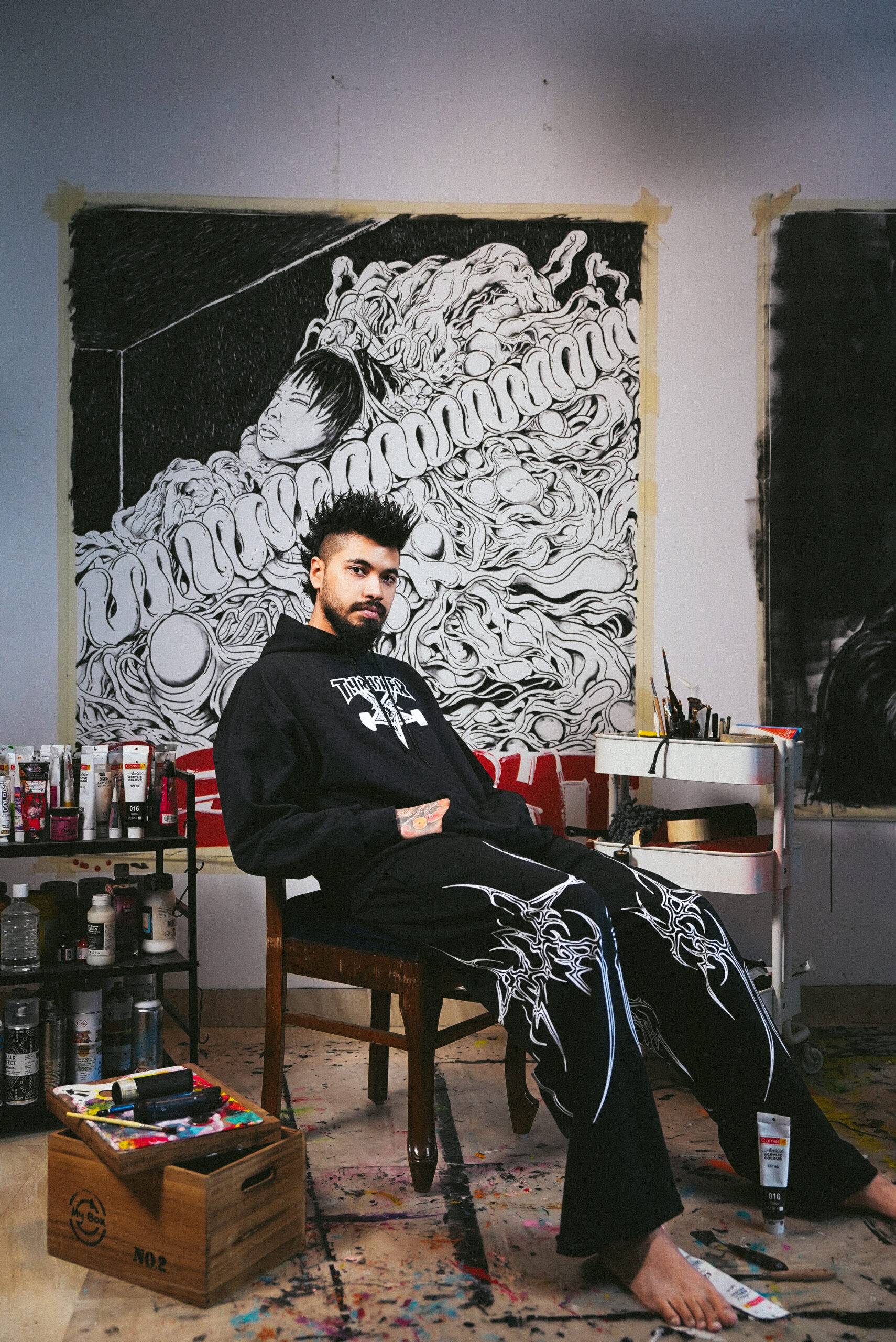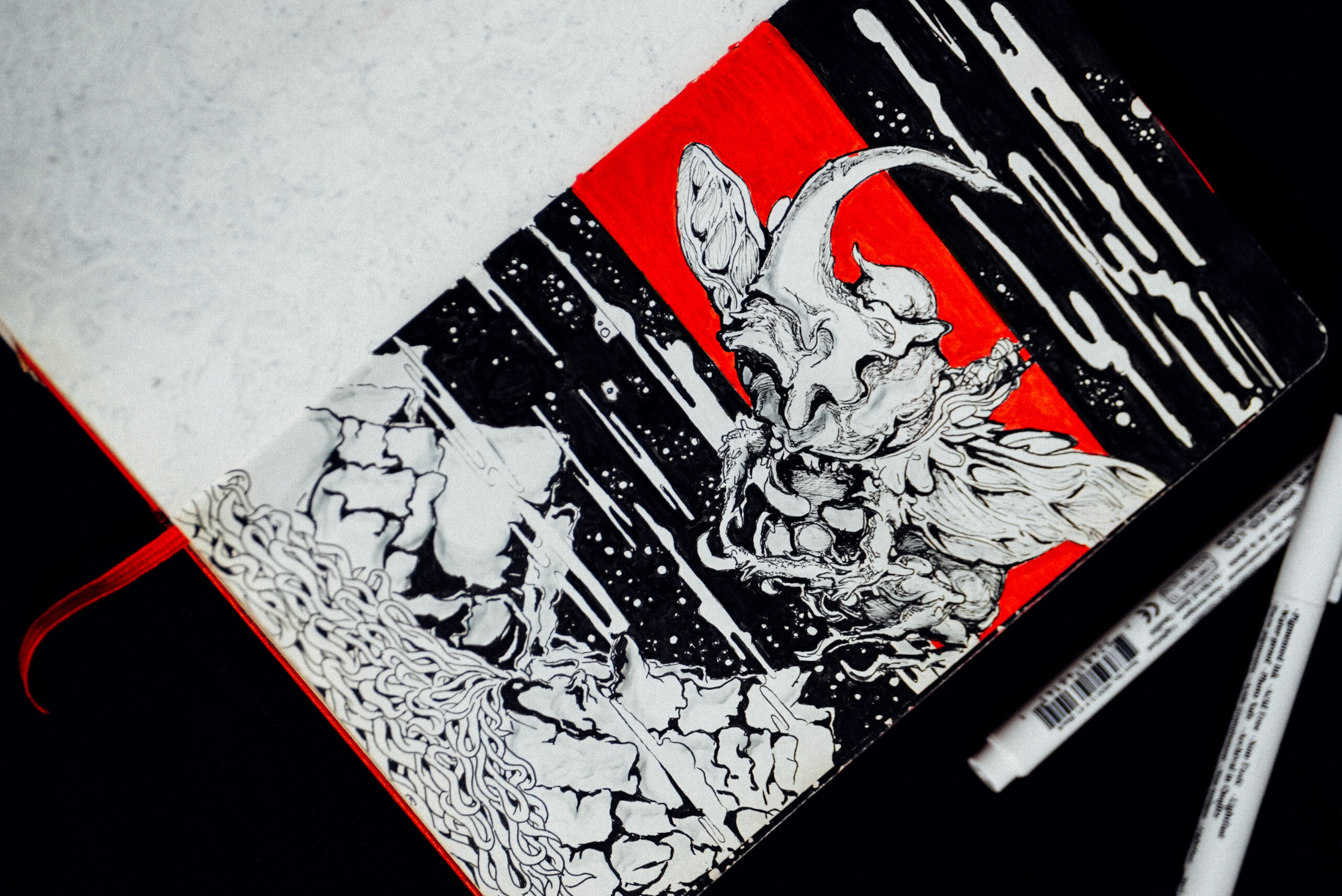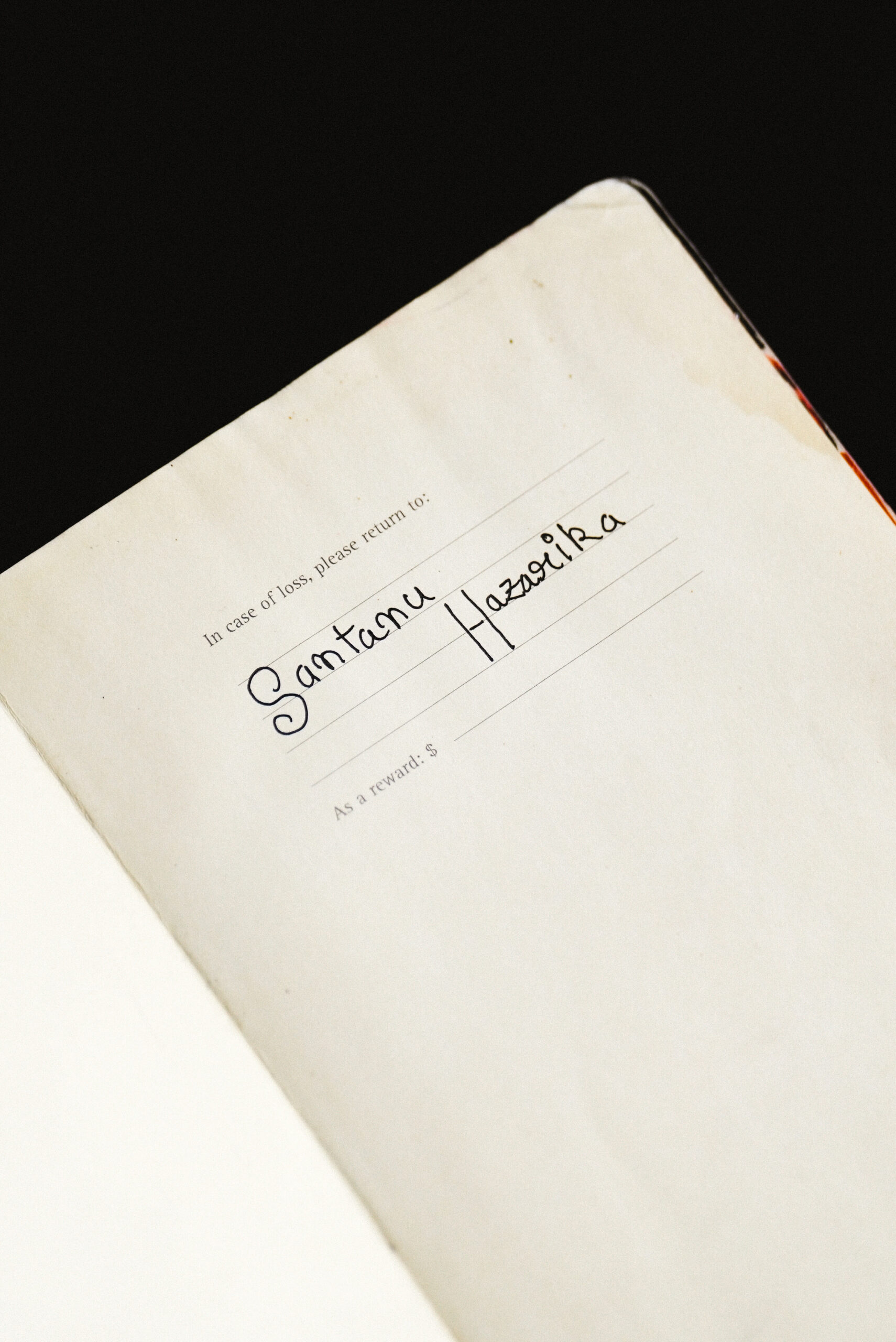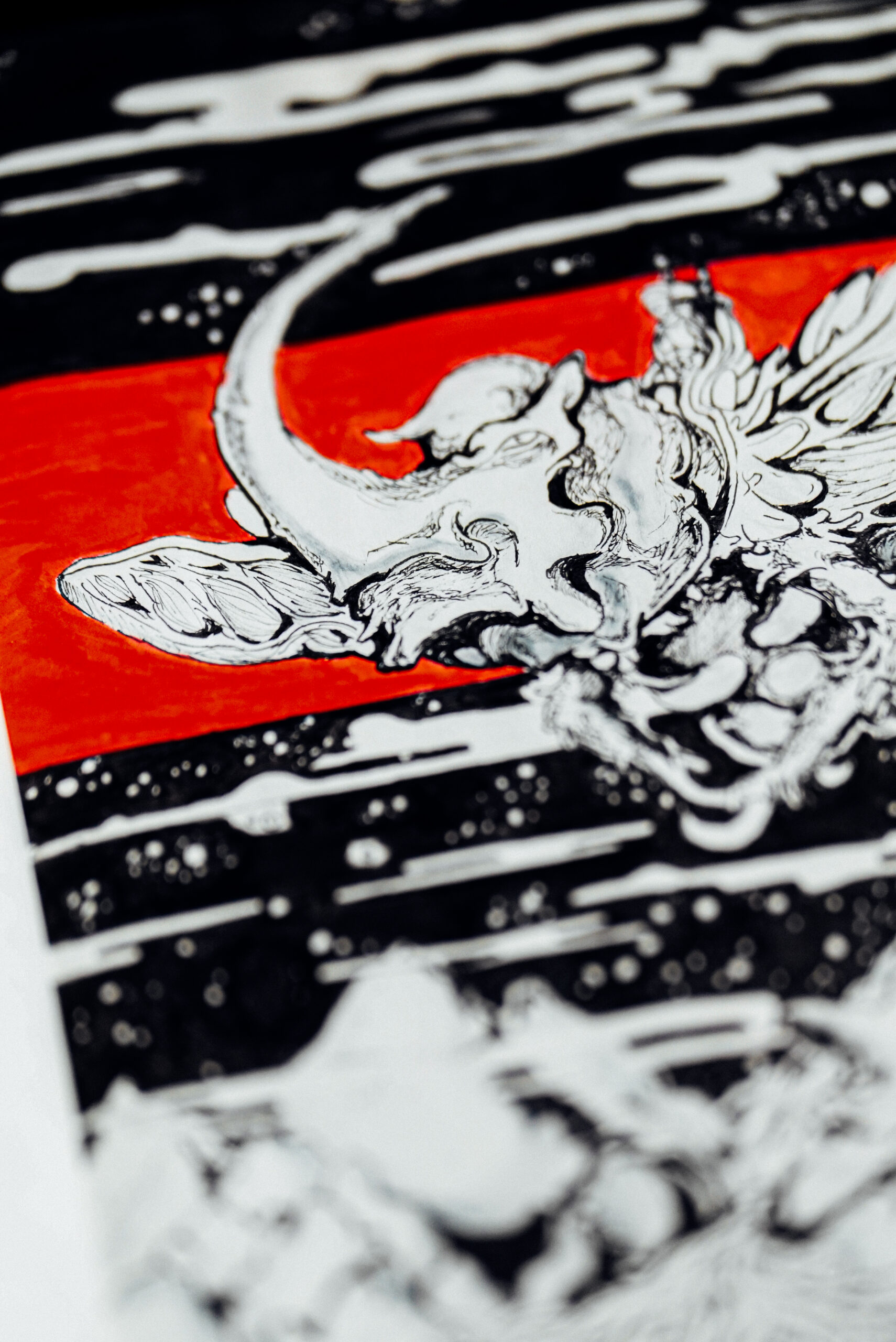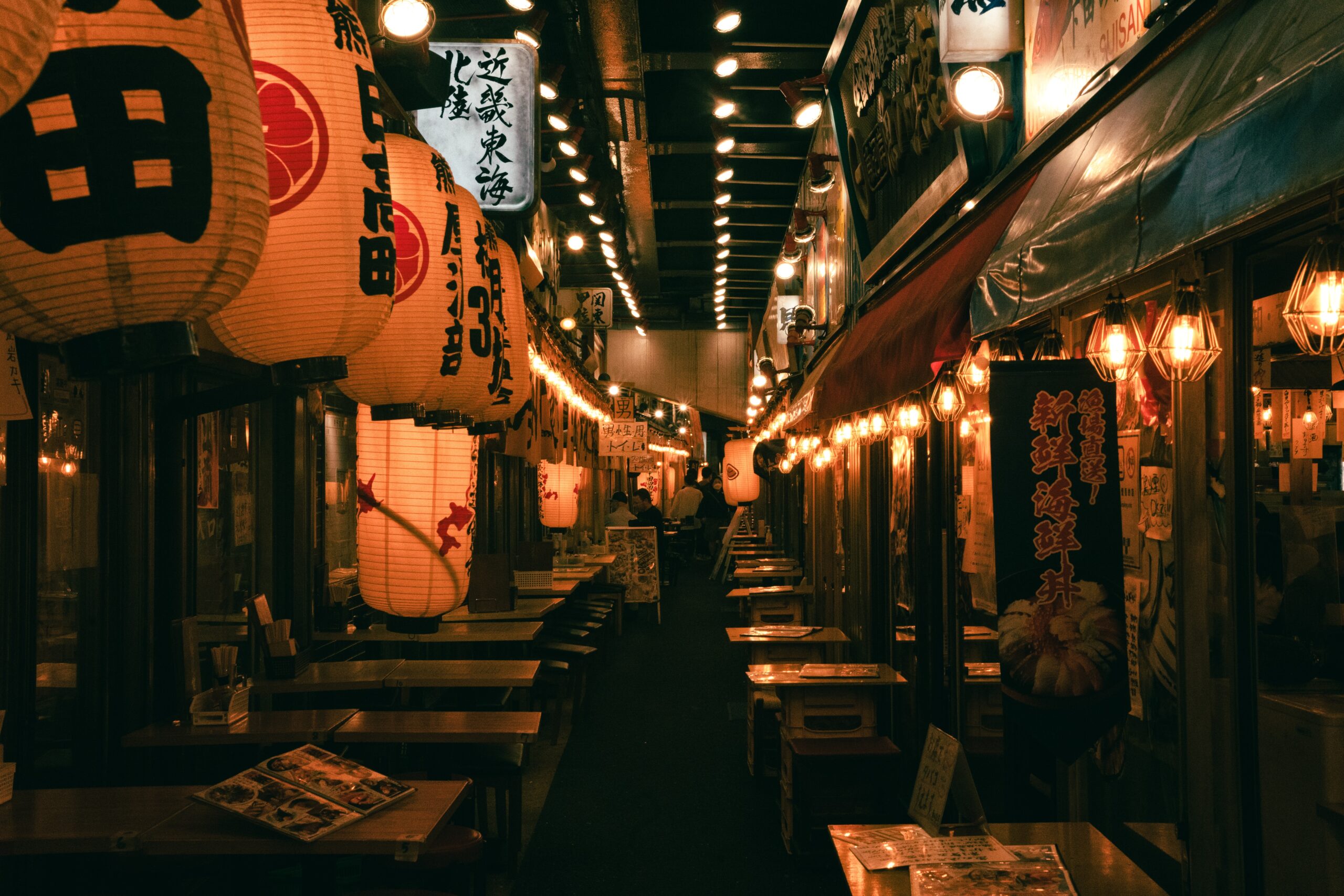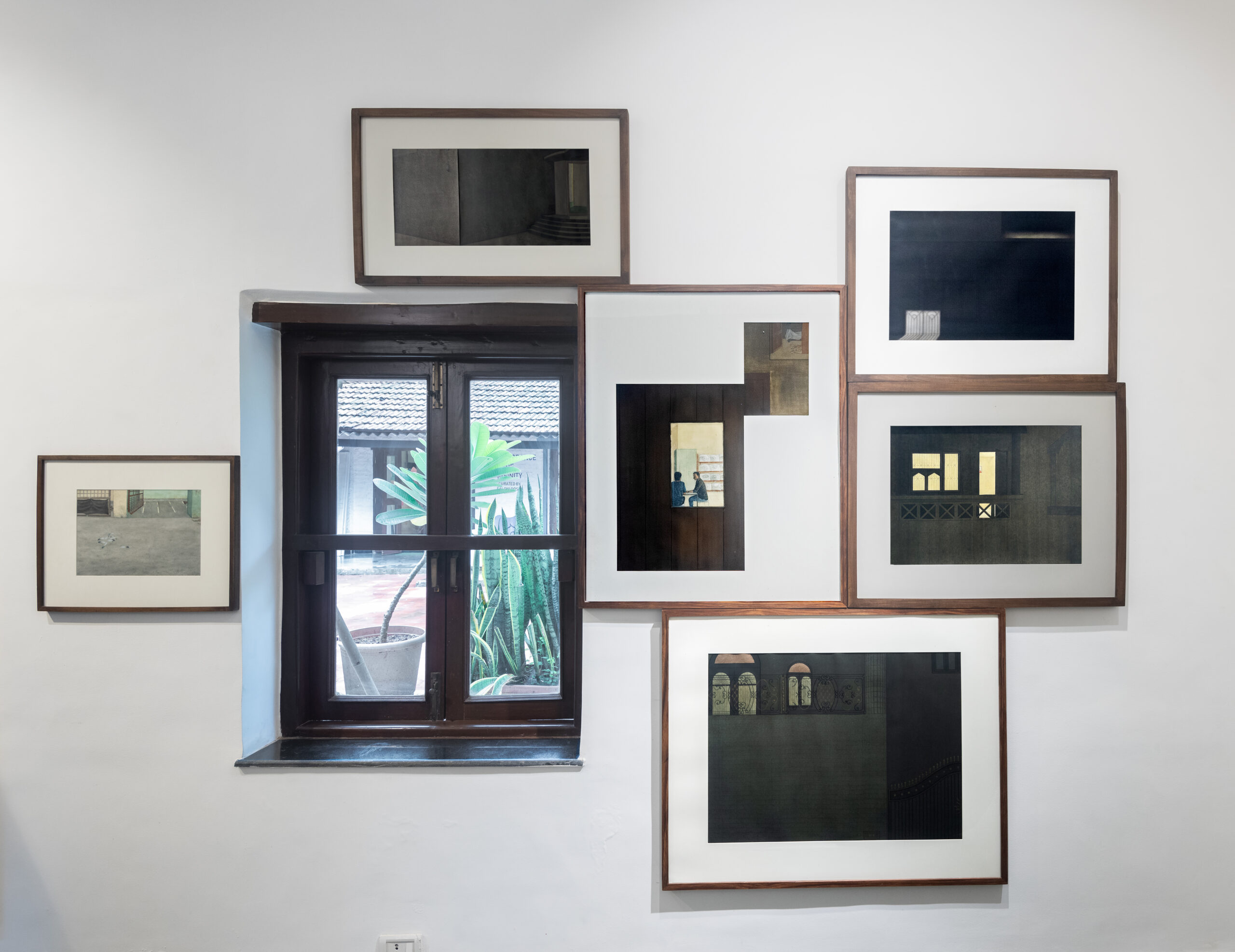There’s calm after the chaos but for multi-disciplinary visual artist and designer Santanu Hazarika, the calm is nestled within the chaos. Hailing from Guwahati, Santanu was always surrounded by silence and the nature which seeped into him. A self-proclaimed “quiet kid”, he spent his early years imbibing everything around him, translating through his art – old and new. “I was never a brilliant student,” explains Santanu, surrounded by a plethora of his art in his studio. “The only thing I was good at was sketching and drawing.”
Detailed tattoos of Hazarika’s hand
Santanu’s artistic journey was shaped by his love for comic books, which he would devour from second-hand bookstores. For Santanu, the narrative of a comic took a backseat to its vivid visuals, colour schemes, and bold pen strokes. The positive reception of his art during his school years motivated Hazarika to pursue it more seriously. While in school, he would be found at the back of the classroom, sketching away during lessons. Oftentimes he would gift these sketches to his teachers as a gesture of gratitude for allowing him the freedom to express himself without disrupting the class, and in return, they would grant him attendance. His journey into sharing his art began with designing cover art for heavy metal bands’ albums. This allowed him to immerse himself in the music scene, experience live gigs, and showcase his artwork to an audience that resonated with his vision.
Santanu’s sketchbook
Living in Assam, a place under unrest and insurgency, Santanu was filled with rage at his core. Spending a better part of his childhood navigating these restrictions and witnessing the violence, Hazarika describes himself as a member of the generation that had a lot of angst bubbling inside them. Heavy metal music, punk aesthetics, and the overarching emotion of “rage” inspired Santanu’s early expression. “I was never exposed to art or design, because those were the least of our concerns at the time, but my first introduction to any form of art was through comic books,” he explains, gesturing at a metal rack filled with comic books in his studio.
“Surrealism is closely aligned with fantasy, which is why I was drawn to it through comic books,” he explains. This interest in comics served as a gateway to a broader art scene, particularly surrealism and the works of Salvador Dalí. Santanu’s artistic style is a blend of modern sensibilities and nostalgic nods to the worlds created in comic books and surrealistic paintings of the 1990s.
The sketching was an outlet, or rather a letter his angst was writing through different elements. It was uniquely Santanu’s manner of expression into his design language, that conveyed the rage in a muted manner. When asked about his use of the colour black extensively throughout his body of work, Hazarika candidly admits that it started due to the lack of resources and the availability of other colours. While the usage of the colour was a marriage of convenience, his relationship with “black” grew into a defining factor of his art. To him, black, an all-encompassing shade, conveys more than the spectrum of colours could.
Inside the pages of Santanu’s sketchbook
Throughout our conversation with Santanu, it felt as though he existed in a different realm, deeply immersed in his craft. His profound appreciation and reverence for his art mirrored that of a seasoned artist. For artists, conceptualisation is a crucial aspect of creation, and fully embracing an idea is key to effectively conveying it. But for Santanu, his art is a calling. There is no other way to describe it. It is an urgent calling that he needs to answer to appropriately express and enunciate his inner thoughts.
When Santanu creates art, it is in one breath. “I don’t like to sit and create my art, I like to stand, move, lie down,” he says. To him, his art is holy and must be attended to in the right way. Pointing to the numerous completed canvases adorning his studio, it becomes evident that unfinished pieces are a rarity, showcasing Santanu’s unwavering dedication when bringing his artworks to completion. This intense focus is akin to that of a dedicated gamer, a label Hazarika proudly embraces, as he inquires with his assistant about the progress of the Valorant game they had started loading.
When you play a video game, the best and only way out is through – something that’s evident in his art. To Santanu, the world and its chaos fade into oblivion. Whether he’s creating in solitude or under the gaze of an audience, his focus remains unwavering. For Hazarika, it will always be a never-ending and uninterrupted conversation between him, his canvas and his paints.
The brightest comets, like Halley’s comet, are exceedingly uncommon — a rarity; Santanu Hazarika emerges like a rare comet, leaving streaks of black, white, punk rock, and ink in his wake.
Words by Esha Aphale.
Image courtesy Shreesh Prajapati (Svasa Life).
